Hello and welcome. I’m Dr. Trevor Cates. Today I am going to do something a little different. I have received so many questions on skin health, skincare and aging. Along with requests for the best beauty tips that I decided to dedicate an entire podcast to answering your questions. I’ve received so many questions that I had to split this show into two parts. I will also answer more questions in upcoming podcasts.
Your Questions Answered:
- Question:
- I am almost 60 years old, have very visible and clogged pores especially in the t-zone. In the last couple of years, these areas have started peeling and flaking. I have purchased a Clarisonic, a facial steamer, and was getting regular facial/ peels. I have used expensive skincare products in the past, and use a 2% salicylic lotion occasionally. My skin drives me crazy. Hope you can help.
- My approach to skincare is an internal and external approach. It is important to look at what you are eating. Until you make changes in your diet, you will probably have trouble with your skin.
- A misconception about acne and pore size is that we have to do things that strip the skin. It’s better to create balance in skin. Oils aren’t bad. The problem is the combination of sebum production and oxidized oils.
- We want to keep the skin clean without drying it out.
- Adjust the PH
- Balance the oils
- Enhance the skin microbiome
- Use products with a mild ph balance a 4-5
- Antioxidants can be very helpful
- Look for underlying causes of why you are having clogged pores.
- Question:
- I’m so excited you are taking questions. My dermatologist won’t even consider any natural options, so it’s nice to have a place to ask these questions. I would love to know how to get rid of Keratosis pilaris. I have reduced the bumpiness on my arms, but the redness is really bad. I think it was reduced by taking natural vitamin a.
- Keratosis pilaris is a common, harmless skin condition that causes dry, rough patches and tiny bumps, usually on the upper arms, thighs, cheeks or buttocks.
- Essential Fatty Acid deficiency
- Try vitamin A (CLO), zinc – in my supplement Skin, Hair and Nails
- Cod liver oil and avocado and a high quality supplement
- Omega 3 supplement or GLA
- Question
- I would also like to know if there is any non chemical, non laser way to reverse or reduce the sun damaged skin on my chest. I have a lot of redness and discoloration.
- Topical use of antioxidants can help with sun damage
- Green tea, white tea, black tea
- Resveratrol
- Turmeric
- Green Algae – Chlorella
- Cranberry seed and Raspberry seed oil – which can protect against oxidative damage
- If you have sun damage, have your dermatologist take a look
- Take internal antioxidants – astaxanthin
- Question:
- And one more, how can I improve the appearance of my neck. I’m 45 and going through peri menopause right now.
- Oils and antioxidant rich ingredients
- Sun block
- Hyaluronic acid – hydrating and space filler, supports collagen and elastin – make sure it comes from a clean source
- Question:
- I got something in my e-mail called “botox in a bottle” . It looks great for bags under the eyes. What are your thoughts on this kind of product?
- Botox is a neurotoxin, that causes the muscles to freeze when it is injected, but it is very toxic.
- There is no cream that freezes your muscles
- Use natural ingredients that protect your skin
- Pullulan has an immediate skin tightening effect
- Oils with long term benefits, like resveratrol, raspberry and cranberry seed oil extract
- Find the underlying cause of the bags under your eyes
- Adequate sleeping
- Hydration
- Allergies
- My step two antioxidant serum
- Green or black tea bag, refrigerate and put on eyelids while the bag is still damp
- Question:
- Hello. I am a dermatopathologist. I am impressed with your knowledge base, positive attitude and entrepreneurship. I am interested in purchasing your new book when available. In the meantime, I would like to know your thoughts on the effects of SPF additive in skin products (other than what it is suppose to do, ie protect skin from damage over a certain time). I am asking because I really want to use SPF products but I noticed that some companies, stopped manufacturing SPF products for many years but then started selling them once again?
- Oxybenzone (avoid – EDC, absorbs easily, 97% of Americans have this in their bodies according to research by the CDC.)
- Avobenzone (safer but doesn’t last as long),
- Octisalate (generally good and often added to avobenzone to make it last longer),
- Octocrylene (okay but some people react to it),
- Homosalate (weak EDC)
- Octinoxate (hormone-mimicking effects on laboratory animals. This chemical is found in humans, including mother’s’ milk samples.)
- Zinc Oxide is a better option – a mineral based sunscreen, it works as a barrier instead of a chemical reaction, no hormone disrupting effects
- Question:
- I have a particular concern with skin tags, seborrheic keratoses, and flat warts. What causes these to come, and is there anything nutritionally or topically that can help with them? Thanks for always being so informative and positive! I’ve always loved your blog and podcasts!
- Skin tags – blood sugar imbalances 80-85 range lower end on bloodwork
- Seborrheic Keratoses – type of skin growth. Which sometimes looks like melanoma, a very serious type of skin cancer. It is benign. Have a dermatologist take a look to help you differentiate because the treatment is different. You can have these removed. But for some people there are so many it’s hard to that.
- These may be from excess sun exposure.
- Topical antioxidants. Internal health.
- Flat warts – cover with tape; tea tree oil; pineapple and papaya enzymes, or freeze; immune system
That’s all the time I have for answering questions today. Be sure and listen to the second half of this question and answer section in the next episode. If you have any more questions for me, be sure and leave them in the comments below. Also, don’t forget to join the Spa Dr. community, so that you never miss an episode!
Additional links to check out:
- TheSkinQuiz.com – Get your customized skin profile. It’s free, and based upon your answers, it will give you great tips for glowing skin and vibrant health.
Don’t miss out on all of the latest tips to get glowing healthy skin from the inside and out. Be sure to follow me on Facebook, Pinterest, and Twitter. Join the conversation!
If you enjoyed this show please leave a review on iTunes.
Hi there. I’m Dr. Trevor Cates, Welcome to The Spa Dr Podcast. Today, I’m doing something a little different. I’ve received so many questions about skin health, skincare, aging, and beauty tips so I decided to designate an entire podcast today answering your questions. I will get through as many as I can today and will answer more in upcoming podcasts.
At the end of the podcast, if you haven’t had your questions answered, I’ll explain how you can get additional questions answered. Let’s go ahead and get started.
The first question is from Sue. “Dr. Cates, my question for you is I am almost 60 years old, have very visible and clogged pores especially in the t-zone area. In the last couple of years, these areas have started peeling and flaking. I have purchased a Clarisonic, a facial steamer, and was getting regular facial peels. I’ve had expensive skincare products in the past, and a salicylic lotion occasionally. My skin drives me crazy. How can you help me?”
I know there are so many options out there and it could be overwhelming, confusing, and you may have tried a lot of different things to help improve the quality of your skin to help you have clear skin, to clear up acne, and help with those pore size and those visible changes in your skin.
Really with my approach to skincare, it’s really an internal and an external approach. It’s important to look at what you’re eating, as well as what you’re putting on your skin. That’s a lot of what I’m going to be talking about today. That’s the same here.
Until you make certain changes with your diet, you’re probably going to still have trouble with your skin. There certainly is a lot you can do topically on your skin too. One of the misconceptions about acne or enlarged pore size, oily skin is that we have to do things to strip the skin. A lot of people will use these products and procedures that dry out the skin. I think that’s probably one of the reasons why you’ve had peeling and flaking and you haven’t gotten the results which you need.
It’s about creating balance in the skin. Oils aren’t bad, they’re actually good. We need the right balance of oils. The problem is we get the culmination of that serum production and oxidized oils and we get blocks in those pores that cause breakouts. What we want to do is keep the skin clean without harsh chemicals drying it out, abrasive treatments.
Instead, think about how you can adjust the pH of your skin. Improve the pH of your skin, balance the oils in your skin, and enhance the skin microbiome on your skin. The first step to doing that is to use products that have a mildly acidic pH balance. That means products that have a pH of about 4 to 4.5, that range is going to help the skin pH, it’s going to help the skin microbiome which are the microorganisms that live on your skin and protect your skin, keep it from breaking out. Also, it can help just keep your skin clear, keep it aging gracefully too if that’s a goal that you have.
Also, there’s certain antioxidants that can be very helpful at reducing any kind of oxidation that’s occurring in your pores and causing them to be visible and clogged. Those are some things to think about. pH balance of your skin, making sure you’re not stripping your skin.
I’m okay with skin brushes like Clarisonic as long as you’re using good products with them and you’re not doing them too frequently. Be careful with anything that’s abrasive on the skin because it can really strip your skin. I’m okay with salicylic acid, a small percentage at times, but you also want to address what’s going on and the underlying causes of that. Why are you having these clogged pores, is there something that you’re eating, in your diet, or you’re getting too much sugar, or are you getting too much dairy products or other inflammatory foods that are leading to these triggers.
“Hi Dr. Cates, I’m so excited you are taking questions. My dermatologist won’t even consider any natural options, so it’s nice to have a place to ask these questions. I would like to know how to get rid of Keratosis Pilaris. I have reduced the bumpiness on my arms, but the redness is really bad. I think it was reduced by taking Vitamin A.
I would also like to know if there is any non-chemical, non-laser way to reverse or reduce sun damaged skin on my chest. I have a lot of redness and discoloration. And one more, how can I improve the appearance of my neck? I’m 45 and going through peri menopause right now.”
Keratosis pilaris is a common, harmless skin condition that causes these dry, rough patches and tiny bumps, usually on the upper arms, thighs, cheeks or buttocks. A lot of people have them on the backs or on their upper arms, these little bumps. They’re very common, they’re not harmful, but they are annoying. It actually can be a sign of something that’s wrong.
A lot of times, it’s a sign of essential fatty acids deficiency or a need for extra Vitamin A, or even the mineral Zinc. Think about those three things. How can you get more essential fatty acids in your diet? Good fats, Vitamin A, as well as Zinc. One good source of Vitamin A for example is Coiler Oil, maybe not your favorite but there are a lot of oily foods like Avocados or other foods like that can naturally contain Vitamin A so that can be helpful as well as possibly looking at taking a supplement, even a multivitamin supplement could have some Vitamin A and Zinc in it. Look for a really high quality one. You want to get a mixed kind, similar what you’d find in nature as far as Vitamin A goes.
For example in my skin, nail, and hair supplement— in the Spa Dr. Skin, Hair, and Nail supplements, I have a lot of these Zinc and the Vitamins, a lot of nutrients that are important for our skin and that can help with skin conditions like this. Also, I know our Omega 3 supplements, our GLA supplement can be helpful.
As far as the sun damage goes, it’s a great question. One of the things that can really help us, the topical use of antioxidant products, creams and serums and things that have antioxidants in them—for example, green tea, black tea, white tea, also Resveratrol is a potent antioxidant, turmeric, chlorella which is a green algae you may have heard of, and also certain oils that are very rich in antioxidant. My favorites are cranberry seed oil and raspberry seed oil. Those have lots of antioxidants.
What that does is it helps reverse oxidative damage or protect the skin from oxidative damage that’s happening in the skin. These ingredients can also in your skincare products, can also help reduce redness, protect from that sun damage changes that can occur.
I do want to mention that it’s good to have your dermatologist look at these areas. If you’ve got sun damaged area skin, it’s a good idea to have your dermatologist take a look, make sure that there’s nothing to be concerned about. That’s another tip on that.
Certainly, also taking antioxidants internally can protect your skin from the inside out. One of my favorites for that is Astaxanthin.
Your last question, Brandy, was about what we can do about the neck area. I know I have a lot of people ask me about that because this was a lot of focus on the face, but we also want our necks to look good too. There are lots of ways that can help nourish the skin on the neck, so those oils that I mentioned can be great on the neck also. Those antioxidant rich ingredients can also help protect the skin from damage, from changes, and then using a really good sunscreen on your face as well as your neck can help protect against sun damage and also the changes in your skin.
A lot of us forget the neck area, but one ingredient that I want to mention that can be really great for the neck area, and really for the face too, is hyaluronic acid. This is a natural ingredient that is a hydrating agent and space filler. It supports collagen and elastin by keeping your skin nourished, and moist. It reduces the signs of fine lines and wrinkles, those signs of aging, it helps keep our skin soft, smooth, supple. Just want to make sure it comes from a really clean source. That’s another tip on that.
Moving onto the next question, this is from Cathy. She says, “Great podcast and information, thank you. I got something in my e-mail called “botox in a bottle.” It looks great for bags under the eyes. What are your thoughts on this kind of product? Thanks.”
Kathy, botox is a neurotoxin. How it works is when it’s used in treatments—botox treatments—injected into different areas that causes the muscles to freeze when it’s injected. The neurotoxin actually is very toxic. The idea is that it’s just injected locally, so it’s not supposed to become a neurotoxin for us but it does have that freezing effect of the muscles. That’s how it works.
Really, there is no cream that does exactly that. There is no cream that you can put on your face, nothing topical that’s going to freeze your muscles. There’s good and maybe not so good. I know how people want that kind of effect without having to have the procedure, but it is kind of an unhealthy substance. It’s actually a very unhealthy substance.
I’m not convinced it’s the safest thing long term, although the studies that we have right now show that there are no long term downsides to it. We do know that sometimes with botox that it’s really based upon the practitioner as far as how good it is. Some people end up with crooked smiles or faces after having it done, it does take some time for it to kick in and to even out.
In the meantime, you can be using a lot of natural ingredients that can actually nourish your skin and have some great protective benefits without being the concern and the cost of this kind of procedure. There are things that can really help tighten your skin, help plump up the skin.
There’s one ingredient that we use in one of my skincare products, it’s called Pullulan. What it does is it’s a natural ingredient that has an immediate skin tightening effect. It tightens and it lifts immediately. A lot of the natural or synthetic ingredients out there, they don’t necessarily have the instant effect like that. This is one of those ingredients that does have that instant effect.
I would consider looking at a lot of the other ingredients that have these long term benefits, some of the oils that I mentioned like the cranberry seed extract and the raspberry seed extract as well as Resveratrol. These have very nourishing and protecting effects, so overtime this is how you’re going to see results. Even doing it as little as a month, people do see benefits on using some of these products or ingredients like this.
Also, I want to mention in your question, you mentioned that you were talking about bags under your eyes. Actually, botox won’t help with that. Even though botox in a bottle, I can’t imagine how it would get rid of that puffiness.
What I would look at is why do you have that puffiness? I want to find out. As a naturopathic physician, that’s the thing I’m always asking. What is the root cause? What is the underlying cause? Let’s address that. Are you dehydrated? Are you getting enough water? Are you getting enough electrolytes? Are you dehydrating yourself? Are you getting enough sleep? How are you sleeping? Are you sleeping on your face, because that can also cause puffiness. Do you have allergies?
Allergies could be environmental or they could be food related, especially if you go to bed and you don’t have that puffiness and you wake up with that puffiness, I’m thinking it’s probably either sleep or something in your bedroom that you’re reacting to that’s causing allergies. Maybe it’s your pet, maybe it’s dust or mold, or something along those lines. That’s what I would look into. It could also be a food that you’ve been eating that causes this. If you’ve eaten really salty foods the night before and it dehydrates you, or you’re eating a food that you’re allergic or sensitive to, it can cause that puffiness under the eyes.
I would look to those things instead of a botox in the bottle. That kind of makes me a little bit nervous and it’s a little bit of false advertising because there’s really nothing that’s going to be in a bottle that works the same. That’s kind of a good thing too.
Also, I do want to mention that my Step Two product, the Antioxidant Serum we’re realizing it’s fantastic for that puffiness under the eyes, helping reduce that. Just another little tip on that, that can be great to use in the eye area. People ask me all the time, Dr. Cates, why don’t you have an eye serum? We actually don’t need an eye serum because our Step Two Antioxidant Serum works beautifully in the eye area as well as Step Four, our Glow Boost, the Oil Blend, can also be used. Really all the products can be used in the eye area, but those are our really good ones for that eye area.
Also if you have that puffiness, another quick little tip is take a green tea or black tea bag, steep it just lightly enough to start releasing the benefits from those tea leaves. Take the two bags, put them in your refrigerator, let them cool, and then take those out while they’re still damp and put them on your closed eyelids. It helps tighten up that area and get rid of the puffiness. Hopefully, that helps.
Moving onto a question from Erika. “Hello. I am a dermatopathologist. I am impressed with your knowledge, positive attitude and entrepreneurship.” Thank you very much, Erika.
“I am interested in purchasing your new book when it’s available. In the meantime, I would like to know your thoughts on the effects of SPF additive in skin products (other than what it is supposed to do.) I am asking because I really want to use SPF products but I noticed that some companies stopped manufacturing SPF products for many years but then started selling them again. I think maybe they were losing money. I’m looking forward to your response.
I want to go through some of the ingredients in the SPF products because I do talk about the importance of protecting your skin. We want to protect our skin from sun damage because of the aging effects and the concerns about skincare occurs from sun exposure. Of course some sun exposure is great for us, it helps our Vitamin D levels and makes us feel good when we get outside and get in the sun. But, we want to be careful about those damaging effects.
I think it’s great to wear a hat, be careful about going out in the middle of the day during the peak hours. If you can avoid those times, that’s probably best. But if you’re out in the sun, still use the sunscreen. First, I want to talk about the chemical sunscreens. I want to go through the most common ones that you’ll see on your labels. When you see those, you know which ones are bad, which ones are okay, and which ones might be a better alternative.
The first one I want to talk about is Oxybenzone. This is the one I want you to avoid at all costs. This is the one that the biggest concern of the chemical sunscreens as far as the research that I’ve done. Oxybenzone is a hormone disrupting chemical, and it also absorbs very easily. In fact, 97% of Americans tested have this in their bodies according to research by the CDC. This is definitely one to avoid.
Hormone disrupting chemicals can lead to a number of problems in the body. Think about all the different ways that our hormones impact our health, it’s not just our sex hormones. We’re talking thyroid, adrenal, also can affect our neurochemistry, our brain functions. There are a lot of reasons why we want to avoid hormone disrupting chemicals. In addition, there are concerns with certain types of cancer.
Now, I’m going to move on to the next ingredient. Another one people ask about a lot is avobenzone. This one is actually a bit safer, and you’ll see this in some of the more natural sunscreens. This one is a safer option. The problem is it doesn’t tend to last as long, so you need to keep applying this.
The next one is Octisalate. This one is generally pretty good, it’s not terrible. It’s not as bad as Oxybenzone for sure. It’s often times added to sunscreens to help the avobenzone last longer. You’ll often times see the octisalate in combination with the avobenzone together. That’s actually not such as a bad combination if you’re going with a chemical sunscreen route.
The next one is Octocrylene. This one seems to be okay as well, not as harmful. Some people do react to it. If you’re one of those people who has really sensitive skin, this is one you might want to be careful with. You can do a little patch, I often recommend this with skincare products. Do a little patch on the inside of your wrist, just put a little product there, let it sit for 24 hours, you can cover it with a bandaid and then watch to see if you have any redness, itching reaction to it. That’s something to watch out for.
There’s also homosalate which research shows that it is a weak hormone disrupting chemical. It’s not as potent as Oxybenzone and other hormone disrupting chemicals, but there are some concerns about that one.
The next one is octinoxate. This one does also have hormone mimicking effects on laboratory animals, not in human studies. That hasn’t been tested as much. Why are we putting on sunscreen if this hasn’t been tested thoroughly? That’s my concern. We do know the chemical is found in humans, including mother’s’ milk samples. Not one of my favorites, a little bit of a concern for me.
I’m going to tell you my favorite as far as an alternative to chemical sunscreens, and that’s zinc oxide. Zinc oxide is a mineral based sunscreen. That’s what I prefer people to use in their sunscreens to protect. It works more as a barrier rather than a chemical reaction in our skin. It has that kind of protective barrier, and it just seems to work really well. We don’t have the concerns about the hormone disrupting effects like we do with some of the others.
This question is from Marni. “Dr Cates, I have a particular concern with skin tags, seborrheic keratoses, and flat warts. What causes these to come, and is there any nutritional or topical things that I can do to help with them? Thanks for always being so informative and positive! I’ve always loved your blog and podcasts.” Thanks, Marni. I appreciate that.
Skin tags. You know what’s interesting about skin tags? These are the little pieces of skin that pop up and they stick out, and they look like little tags. That’s why they’re called skin tags. Sometimes, these just randomly show up. I know that what seems to be a link here sometimes is having to do with your blood sugar issues. We know that people with blood sugar issues such as people with diabetes tend to have more skin tags.
Also, sometimes women during pregnancy when they have issues with their blood sugar tend to have more of these skin tags pop up. If you just have a few here and there, maybe it’s not that big of a deal. But if you have a lot of skin tags and they keep popping up, you might want to have your blood sugar tested. Even if your blood sugar is considered in the normal range, when you have your fasting blood glucose tested, look for a number in the 80-85 range. That’s more optimal where you want to be, although the normal range is below 100. I prefer people to be 80-85, somewhere in there as the upper end.
It’s definitely something to think about, you can maybe talk to your healthcare provider if it’s time for your checkup, you can have your blood work tested. Just make sure that it’s in that optimal range. Also, be careful about eating excessive amounts of sugar, eating balanced meals, those kinds of things.
Moving onto seborrheic keratoses. This is a type of skin growth that’s benign. It often looks kind of scary though because sometimes it looks like melanoma which is a very serious type of skin cancer, but it is benign, it’s not cancerous. It is good to have a dermatologist take a look to differentiate if you have these kinds of skin lesions. It kind of looks like a flat mole, but it suddenly appears, it’s not something you’ve had for a long time but it will suddenly appear or it gradually grows.
These are things that we tend to see as we get older, they’re not as common in young people. Have your dermatologist take a look at it, make sure it’s not skin cancer because there’s obviously different treatment for this if it’s cancer versus seborrheic keratoses. They can be removed, your dermatologist can remove this for you.
The problem is some people have a lot of these. They keep popping up. If that’s the case, you want to be proactive. Sun exposure seems to be a trigger for that, aging can be a contributing factor too. We can’t stop the clock, but we can protect our skin. Something to be aware of, you can protect your skin with a good sunscreen like we talked about.
Also, topical antioxidants as well as internal antioxidants can be really helpful. There might be some concerns with oxidative damage going on, so antioxidants seem to be protective against that. Some of the same things that I mentioned before like some of the teas, green tea, black tea, white tea, Resveratrol, some of those wonderful oils, they can help protect the skin from those damages.
Also what I find that when people are in a really optimal state of health, they tend to have less of these. They pop up less. Look at other things that you can do with your lifestyle, with your diet, having a more balanced diet and things that might help as well.
As far as flat warts go, there are a lot of different types of warts. There’s some little tricks that I can tell you about. Really, warts can be in part due to the immune system and how your immune system is. If you get a lot of warts, and they keep popping up, keep reoccurring, maybe you’re having them frozen off but they keep showing back up, you might want to take a look at what’s going on with your immune system, see if you need some support there. Make sure that you’re doing things to help.
You can also do some little things like applying tea tree oil directly to warts. This is one of the few times that I say to apply essential oils directly to the skin. You can actually do this with warts. If you’re concerned about either if it’s working with a kid or somebody young, you might want to dilute the tea tree oil. Tea tree oil is really great directly, you can just put it on a little q tip, you don’t need a lot of it. A lot of it goes a long way.
You can dilute it in something like almond oil, avocado oil, olive oil, any of those kinds of things. You can just use it directly and just apply it directly to the wart, cover it with a bandaid, and give it some time. You can do that before you go to bed at night. It can take a couple of days, a few days to start noticing a difference. You should start noticing your difference.
Also, there’s certain enzymes that can help break down and wear away pineapple and papaya enzymes. Those can be helpful when applied topically to the wart. I’ve also seen people put tape over a wart, especially plantar warts. People will put duct tape over it and leave it overnight, that can start wearing down the wart as well.
Hopefully, that gives you some tips on these common skin conditions that I see quite often. That’s all the time I have for answering questions today. If you have questions that I did not answer or you want clarification on anything that I talked about today, please post in the comments section below this video on YouTube or on thespadr.com. I’ll do my best to answer all of your questions in upcoming podcasts.
Also, I want to invite you to join The Spa Doctor community on my website or subscribe to the podcast on iTunes so you don’t miss any of our upcoming podcasts.
If you haven’t done so already, you can get your customized information, your own skin profile at theskinquiz.com. It’s free and based upon answer to just a few questions, you’ll get great tips for glowing skin and vibrant health just specific to you based on your answers.
Another way to ask me questions is on social media. You can join me on Facebook, Pinterest, Twitter, and Instagram and join the conversation. I hope you guys enjoyed today, really can’t wait to hear for your feedback. Thank you and I’ll see you next time.
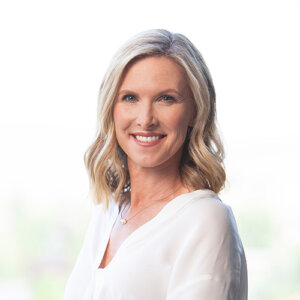
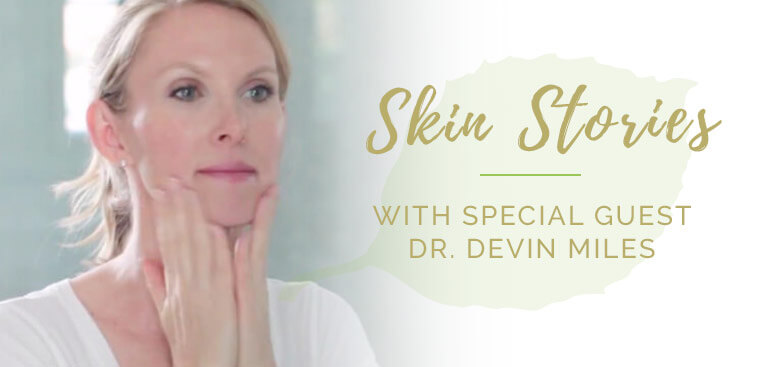
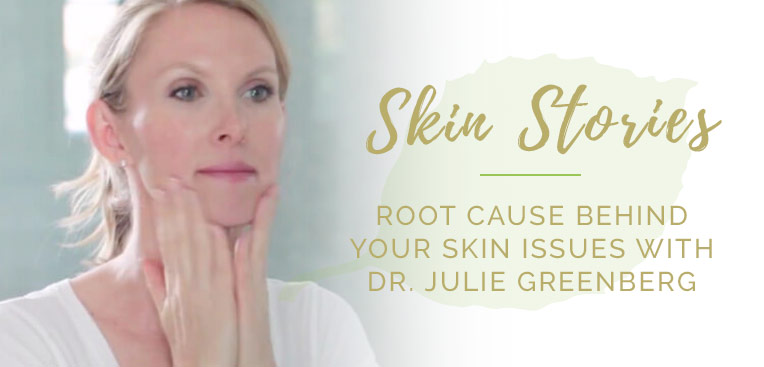
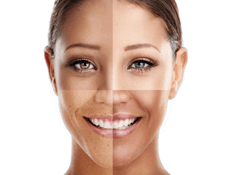

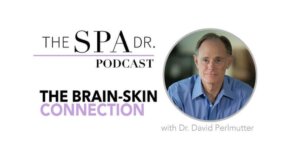
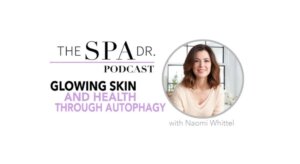
Reader Interactions
Hi Dr. Cates. I love what you do and love the idea I can come here for natural answers to my skincare questions.
Since a very young age I’ve had very fair skin, a lot of freckles and burn really easy. Is there an underlying reason/cause for this? Is there anything that can naturally lighten freckles?
One last question, is there a good mineral makeup you can recommend?
Hi Ashley. I hear you… I have fair and freckly skin too. I will answer your questions in an upcoming podcast, but in the meantime I would suggest using a really good sunblock such as this one – https://thespadr.com/collections/sun-care.
Thanks for your quick response Dr. Cates. One last question – do you do a podcast once a week or do you have a paritcular schedule for your podcast? Just want to make sure I don’t miss an episode:)! Thank you!
Ashley, I usually post once per week, typically on Thursdays.
Hello Dr. Cates, I love all this information you are sharing. My two questions are what causes cherry angiomas? How can you get rid of them? Thank you, Paula
Thanks for asking Paula. I will add that to my list of questions for future podcasts.
Dr. Cates,
In your email your ask to post a comment on thoughts about this podcast….My thoughts are that this kind of a podcast with practical, positive information is one that no woman, in particular, wants to miss. I appreciate you being clear in what you are referring to and giving advice that most anybody can take steps to doing and it becoming a healthy lifestyle. I also like the range of skin issues that are covered. Clearly you know what you are talking about. Thanks!